Establishing the Manner of Death: A 3D Reconstruction of a Case of Hanging
Abstract
:1. Introduction
2. Case
2.1. Information from the Police Investigation
2.2. On-Site Investigation
2.3. Autopsy Findings
2.4. Complementary Investigations
2.5. 3D Reconstruction
3. Discussion
4. Conclusions
Author Contributions
Funding
Institutional Review Board Statement
Informed Consent Statement
Data Availability Statement
Conflicts of Interest
References
- National Institute of Mental Health. Suicide. Available online: https://www.nimh.nih.gov/health/statistics/suicide (accessed on 11 October 2023).
- World Health Organization. Preventing Suicide: A Global Imperative; WHO Press: Geneva, Switzerland, 2014. [Google Scholar]
- Benevento, M.; Mandarelli, G.; Ferorelli, D.; Trotta, S.; Bottari, G.; Caterino, C.; Solarino, B. Complex Suicide by Drowning and Self-Strangulation: An Atypical “Holy” Way to Die. Forensic Sci. Int. Rep. 2021, 3, 100190. [Google Scholar] [CrossRef]
- Crestani, C.; Masotti, V.; Corradi, N.; Schirripa, M.L.; Cecchi, R. Suicide in the Elderly: A 37-Years Retrospective Study. Acta Biomed. 2019, 90, 68–76. [Google Scholar] [CrossRef] [PubMed]
- Saukko, P.; Knight, B. Knight’s Forensic Pathology, 3rd ed.; CRC Press: Boca Raton, FL, USA, 2004. [Google Scholar]
- Gascho, D.; Heimer, J.; Tappero, C.; Schaerli, S. Relevant Findings on Postmortem CT and Postmortem MRI in Hanging, Ligature Strangulation and Manual Strangulation and Their Additional Value Compared to Autopsy—A Systematic Review. Forensic Sci. Med. Pathol. 2019, 15, 84–92. [Google Scholar] [CrossRef] [PubMed]
- Verma, S.K. Pediatric and Adolescent Strangulation Deaths. J. Forensic Leg. Med. 2007, 14, 61–64. [Google Scholar] [CrossRef] [PubMed]
- Nouma, Y.; Ammar, W.B.; Bardaa, S.; Hammami, Z.; Maatoug, S. Accidental Hanging among Children and Adults: A Report of Two Cases and Review of the Literature. Egypt. J. Forensic Sci. 2016, 6, 310–314. [Google Scholar] [CrossRef]
- Mcquown, C.; Frey, J.; Steer, S.; Fletcher, G.E.; Kinkopf, B.; Fakler, M.; Prulhiere, V. Prevalence of Strangulation in Survivors of Sexual Assault and Domestic Violence. Am. J. Emerg. Med. 2016, 34, 1281–1285. [Google Scholar] [CrossRef] [PubMed]
- Patch, M.; Farag, Y.M.K.; Anderson, J.C.; Perrin, N.; Kelen, G.; Campbell, J.C. United States ED Visits by Adult Women for Nonfatal Intimate Partner Strangulation, 2006 to 2014: Prevalence and Associated Characteristics. J. Emerg. Nurs. 2021, 47, 437–448. [Google Scholar] [CrossRef] [PubMed]
- Sharma, L.; Khanagwal, V.P.; Paliwal, P.K. Homicidal Hanging. Leg. Med. 2011, 13, 259–261. [Google Scholar] [CrossRef]
- Pollak, S.; Thierauf-Emberger, A. Homicidal Assault to the Neck with Subsequent Simulation of Self-Hanging. Forensic Sci. Int. 2015, 253, e28–e32. [Google Scholar] [CrossRef]
- Mohanty, M.K.; Rastogi, P.; Kumar, G.P.; Kumar, V.; Manipady, S. Periligature Injuries in Hanging. J. Clin. Forensic Med. 2003, 10, 255–258. [Google Scholar] [CrossRef]
- Mansueto, G.; Feola, A.; Zangani, P.; Porzio, A.; Carfora, A.; Campobasso, C. Pietro A Clue on the Skin: A Systematic Review on Immunohistochemical Analyses of the Ligature Mark. Int. J. Environ. Res. Public Health 2022, 19, 2035. [Google Scholar] [CrossRef] [PubMed]
- Berezowski, V.; Mallett, X.; Moffat, I. Geomatic Techniques in Forensic Science: A Review. Sci. Justice 2020, 60, 99–107. [Google Scholar] [CrossRef] [PubMed]
- Gardner, R.M.; Krouskup, D. Practical Crime Scene Processing and Investigation; CRC Press: Boca Raton, FL, USA, 2018. [Google Scholar]
- Berezowski, V.; Keller, J.; Liscio, E. 3D Documentation of a Clandestine Grave: A Comparison between Manual and 3D Digital Methods. J. Assoc. Crime Scene Reconstr. 2018, 22, 23–37. [Google Scholar]
- Zancajo-Blázquez, S.; Lagüela-López, S.; González-Aguilera, D.; Martínez-Sánchez, J. Segmentation of Indoor Mapping Point Clouds Applied to Crime Scenes Reconstruction. IEEE Trans. Inf. Forensics Secur. 2015, 10, 1350–1358. [Google Scholar] [CrossRef]
- Zancajo-Blazquez, S.; Gonzalez-Aguilera, D.; Gonzalez-Jorge, H.; Hernandez-Lopez, D. An automatic image-based modelling method applied to forensic infography. PLoS ONE 2015, 10, e0118719. [Google Scholar] [CrossRef] [PubMed]
- Henssge, C.; Althaus, L.; Bolt, J.; Freislederer, A.; Haffner, H.T.; Henssge, C.A.; Hoppe, B.; Schneider, V. Experiences with a Compound Method for Estimating the Time since Death. I. Rectal Temperature Nomogram for Time since Death. Int. J. Legal Med. 2000, 113, 303–319. [Google Scholar] [CrossRef] [PubMed]
- Schiraldi, M.; Raniero, D. Unusual Ligature Mark after Strangulation and Skin Maceration. Aust. J. Forensic Sci. 2023, 1–9. [Google Scholar] [CrossRef]
- Maneli, M.A.; Isafiade, O.E. 3D Forensic Crime Scene Reconstruction Involving Immersive Technology: A Systematic Literature Review. IEEE Access 2022, 10, 88821–88857. [Google Scholar] [CrossRef]
- Colard, T.; Delannoy, Y.; Bresson, F.; Marechal, C.; Raul, J.-S.; Hedouin, V. 3D-MSCT Imaging of Bullet Trajectory in 3D Crime Scene Reconstruction: Two Case Reports. Leg. Med. 2013, 15, 318–322. [Google Scholar] [CrossRef]
- Buck, U. 3D Crime Scene Reconstruction. Forensic Sci. Int. 2019, 304, 109901. [Google Scholar] [CrossRef]
- Buck, U.; Naether, S.; Räss, B.; Jackowski, C.; Thali, M.J. Accident or Homicide–Virtual Crime Scene Reconstruction Using 3D Methods. Forensic Sci. Int. 2013, 225, 75–84. [Google Scholar] [CrossRef]
- Sieberth, T.; Dobay, A.; Affolter, R.; Ebert, L. A Toolbox for the Rapid Prototyping of Crime Scene Reconstructions in Virtual Reality. Forensic Sci. Int. 2019, 305, 110006. [Google Scholar] [CrossRef]
- Raneri, D. Enhancing Forensic Investigation through the Use of Modern Three-Dimensional (3D) Imaging Technologies for Crime Scene Reconstruction. Aust. J. Forensic Sci. 2018, 50, 697–707. [Google Scholar] [CrossRef]
- Cunha, R.R.; Arrabal, C.T.; Dantas, M.M.; Bassanelli, H.R. Laser Scanner and Drone Photogrammetry: A Statistical Comparison between 3-Dimensional Models and Its Impacts on Outdoor Crime Scene Registration. Forensic Sci. Int. 2022, 330, 111100. [Google Scholar] [CrossRef]
- Fatzinger, E.; Landerville, J.; Tovar, J.; Nguyen, B. Validation of a PC-Crash Multibody Sport Bike Motorcycle Model. SAE Int. J. Adv. Curr. Pract. Mobil. 2021, 3, 1682–1914. [Google Scholar] [CrossRef]
- Robinson, E.M. Crime Scene Photography; Academic Press: Cambridge, MA, USA, 2016. [Google Scholar]
- Duncan, C.D. Advanced Crime Scene Photography; CRC Press: Boca Raton, FL, USA, 2023. [Google Scholar]
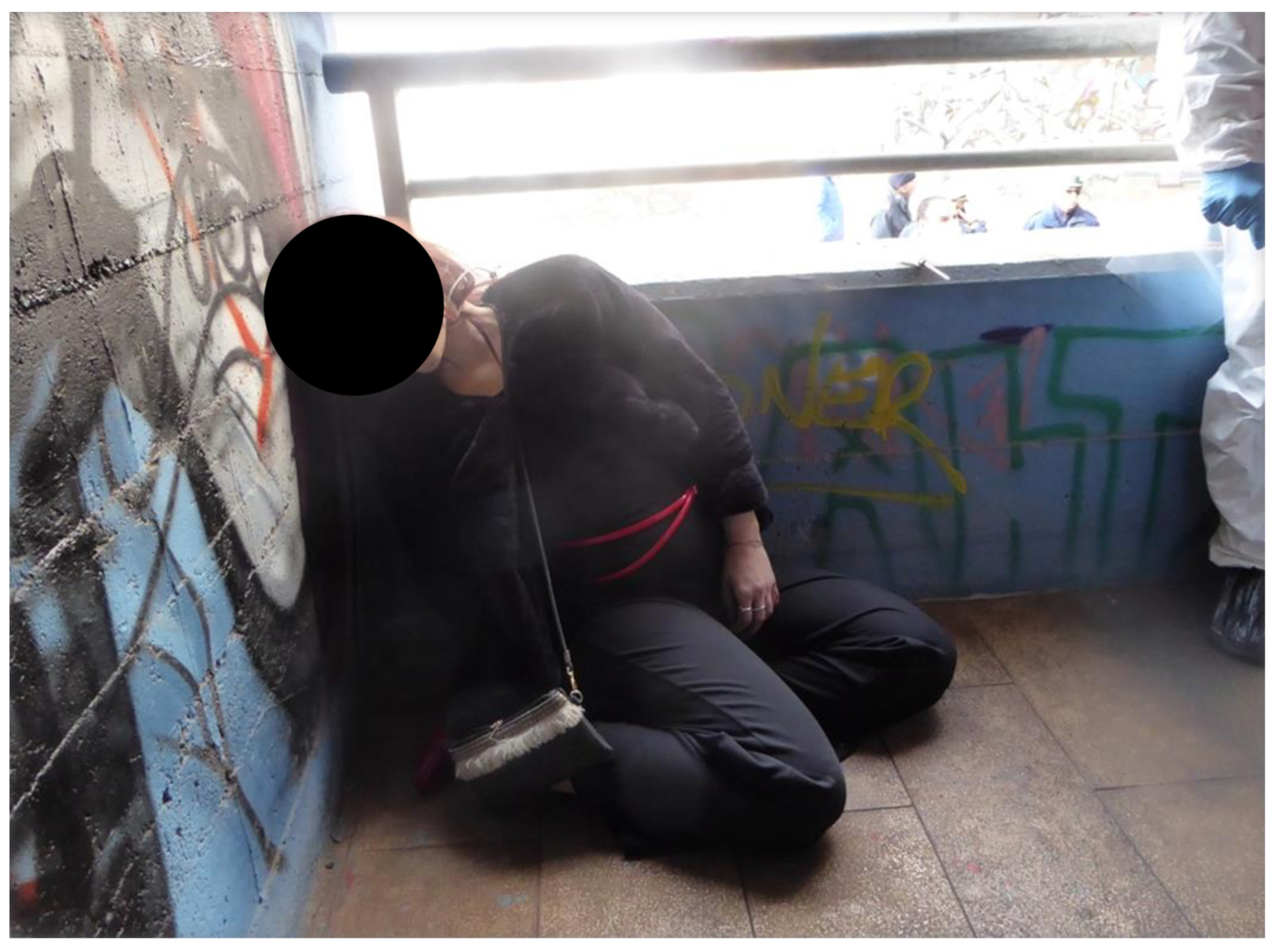

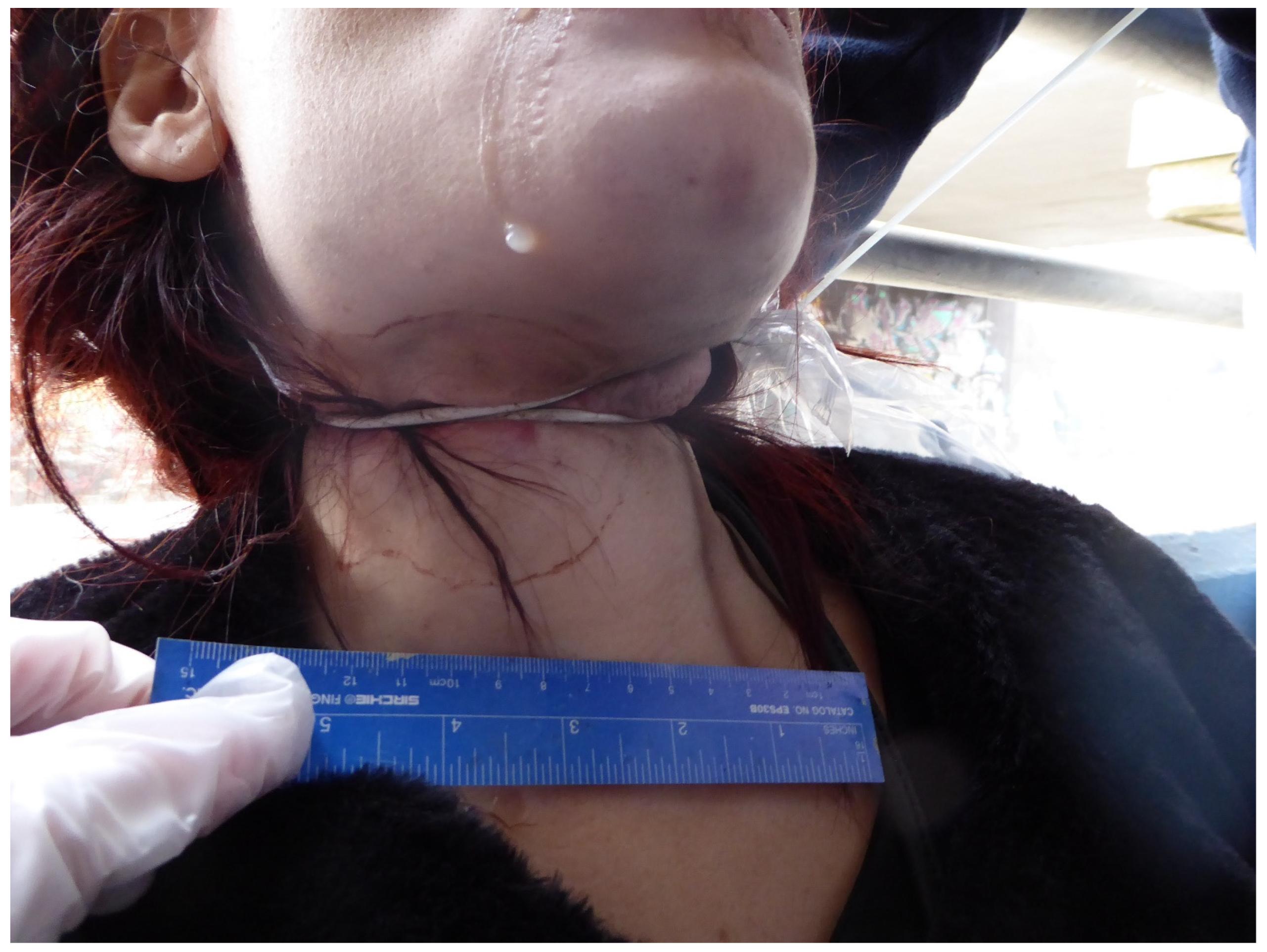
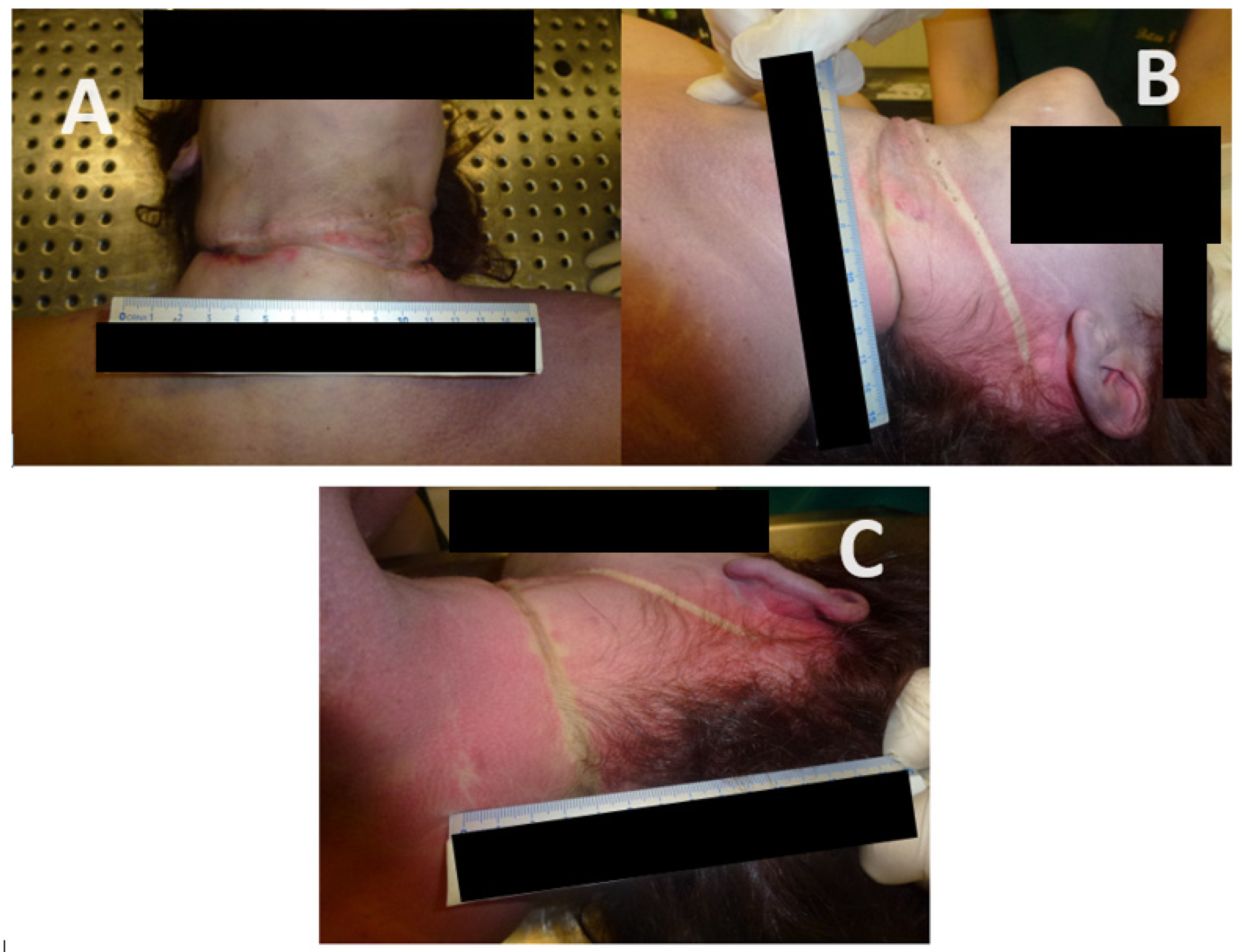
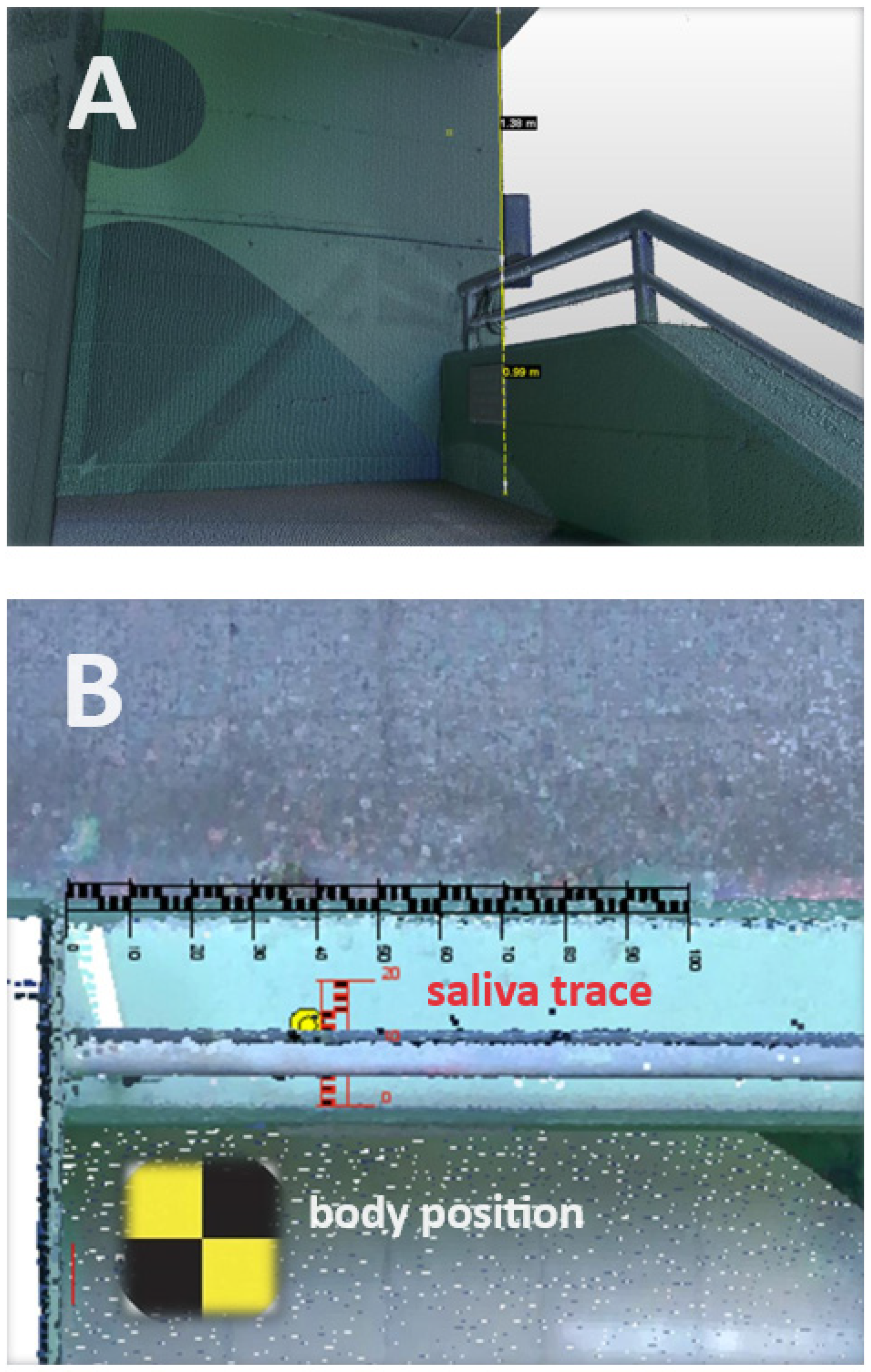
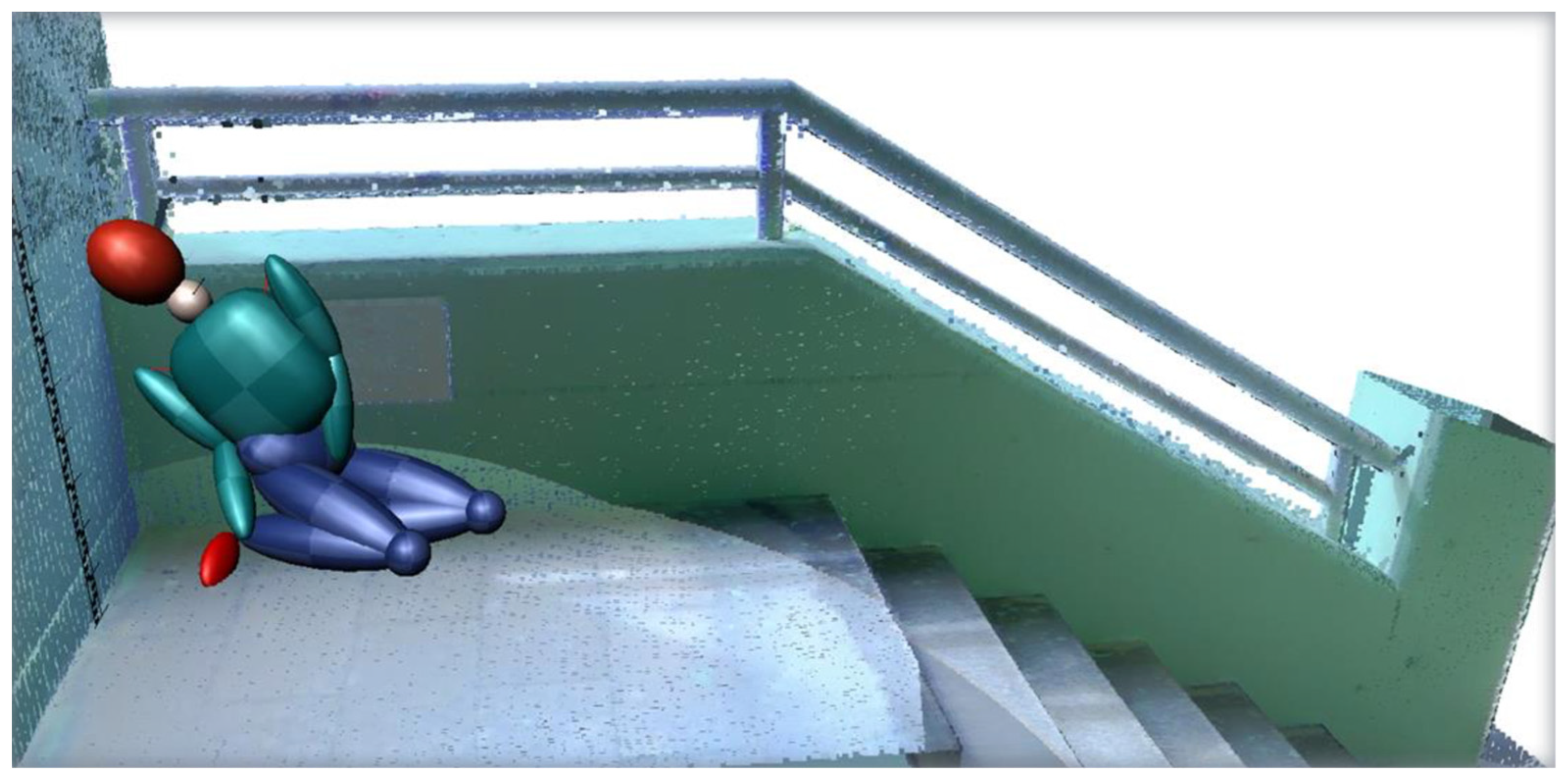
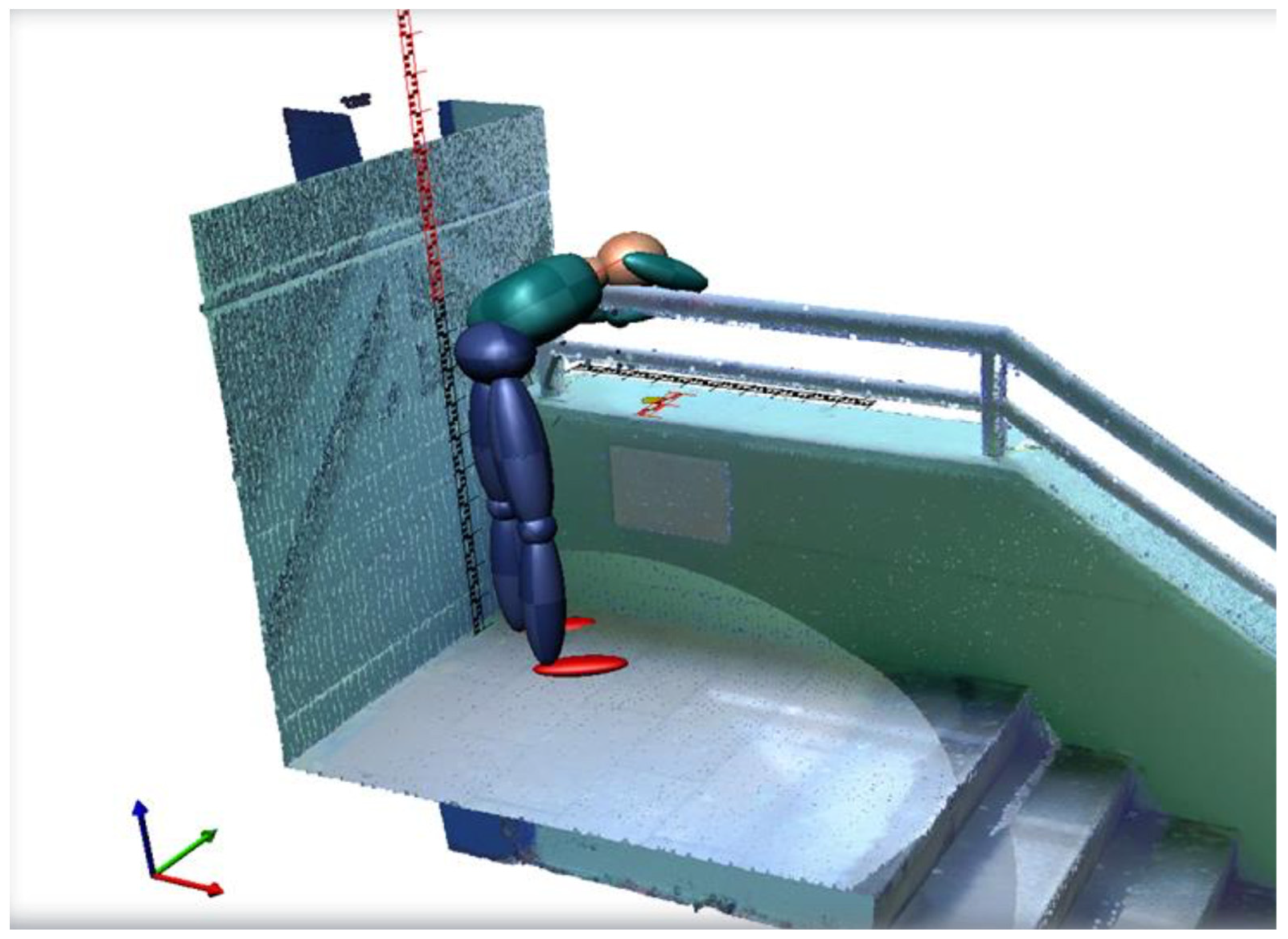

Disclaimer/Publisher’s Note: The statements, opinions and data contained in all publications are solely those of the individual author(s) and contributor(s) and not of MDPI and/or the editor(s). MDPI and/or the editor(s) disclaim responsibility for any injury to people or property resulting from any ideas, methods, instructions or products referred to in the content. |
© 2023 by the authors. Licensee MDPI, Basel, Switzerland. This article is an open access article distributed under the terms and conditions of the Creative Commons Attribution (CC BY) license (https://creativecommons.org/licenses/by/4.0/).
Share and Cite
Benevento, M.; Ambrosi, L.; Maselli, E.; Ferorelli, D.; Solarino, B.; Di Fazio, A. Establishing the Manner of Death: A 3D Reconstruction of a Case of Hanging. Forensic Sci. 2023, 3, 582-591. https://doi.org/10.3390/forensicsci3040042
Benevento M, Ambrosi L, Maselli E, Ferorelli D, Solarino B, Di Fazio A. Establishing the Manner of Death: A 3D Reconstruction of a Case of Hanging. Forensic Sciences. 2023; 3(4):582-591. https://doi.org/10.3390/forensicsci3040042
Chicago/Turabian StyleBenevento, Marcello, Laura Ambrosi, Eloisa Maselli, Davide Ferorelli, Biagio Solarino, and Aldo Di Fazio. 2023. "Establishing the Manner of Death: A 3D Reconstruction of a Case of Hanging" Forensic Sciences 3, no. 4: 582-591. https://doi.org/10.3390/forensicsci3040042
APA StyleBenevento, M., Ambrosi, L., Maselli, E., Ferorelli, D., Solarino, B., & Di Fazio, A. (2023). Establishing the Manner of Death: A 3D Reconstruction of a Case of Hanging. Forensic Sciences, 3(4), 582-591. https://doi.org/10.3390/forensicsci3040042








